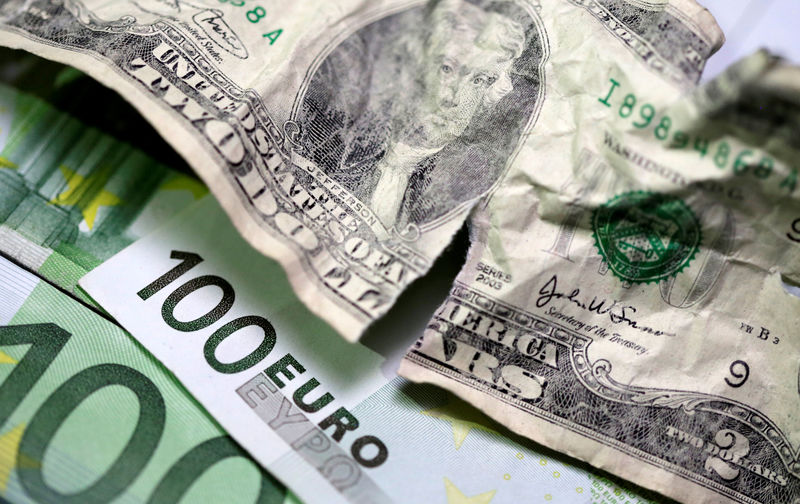Gold scales new record high; nears $4,200/oz on Fed easing bets, trade tensions
Investing.com - The US dollar retreated Wednesday, trading on the backfoot since the deal between the Trump administration and both Canada and Mexico to delay tariffs, while the euro gained despite regional services activity disappointment.
At 04:20 ET (09:20 GMT), the Dollar Index, which tracks the greenback against a basket of six other currencies, traded 0.4% lower to 107.405, falling back from the three-week high seen at the start of the week.
Dollar on back foot
Volatility in the foreign exchange markets has eased a little after a turbulent start to the week following Trump’s imposition of steep tariffs on top US trading partners, with those on Mexico and Canada having since been delayed following negotiations.
Trump, however, didn’t pull back on the imposition of tariffs on China, and Beijing has swiftly responded by slapping tariffs on imports such as American cars, farm equipment and energy shipments.
“The focus is now on China, and a relatively measured response by Beijing to Trump’s tariffs is keeping markets optimistic that some deal can be struck before China’s retaliatory tariffs kick in on 10 January,” said analysts at ING, in a note.
Traders are also keeping an eye on President Trump’s surprise plan for the United States to take over the war-ravaged Gaza Strip and develop it economically, given the sensitive nature of the issue in the Middle East.
“Markets are treating Trump’s announced intention to take over the Gaza Strip and evacuate Palestinians to neighbouring countries with scepticism,” said ING.
“Should we see hints that the US is planning to deploy troops in the Middle East, the market implications can be risk-off, oil-positive and dollar-positive, as Arab nations should firmly oppose the move.”
Euro higher despite PMI disappointment
In Europe, EUR/USD traded 0.3% higher at 1.0411, despite generally disappointing services activity data for January in the eurozone.
The HCOB services PMI for the eurozone fell to 51.3 in the first month of the new year, below 51.6 in December, while the composite index remained marginally in growth territory.
“We stick to our call that EUR/USD will start to lose support once crossing 1.040, as the euro remains broadly unattractive from a macro fundamental perspective and Trump has indicated that the EU should be next on the tariff list,” ING added.
GBP/USD traded 0.4% higher to 1.2523, ahead of Thursday’s policy-setting meeting by the Bank of England.
The UK central bank looks likely to cut interest rates next week, to 4.5%, from 4.75%, when it will also update its economic growth and inflation forecasts.
Since the BoE published its last projections in November, the economy has stagnated and measures of inflation most closely watched by rate-setters dropped last month.
Wild swings for onshore yuan
In Asia, USD/CNY traded 1.2% higher at 7.2710, with the onshore yuan registering wild swings on Wednesday as the country returned from holiday.
The main focus remains Trump’s trade tariffs, which came into effect from Tuesday. China retaliated by imposing tariffs on some U.S. commodity imports, imposing export controls on rare earths, and also launching an antitrust investigation into Google (NASDAQ:GOOGL).
USD/JPY traded 0.8% lower to 153.12, its lowest level since mid-December.
The yen was boosted chiefly by stronger-than-expected average cash earnings and wage income data, which showed sustained growth in December. The reading was also boosted by year-end bonuses.
The reading tied into expectations that the Bank of Japan will have enough impetus to keep raising interest rates, after it hiked rates by 25 basis points last week.
